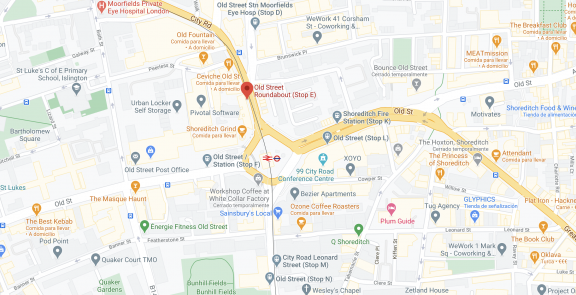

New York Times “At Home”: What are you doing this weekend?
IN A NUTSHELL:
We are used to the media sorting its content into sections based on topics and geographies, not by occasions or channels. “At Home” from The New York Times, introduces a new way of sorting information that really considers the patterns of consumption being followed by current consumers.
THE GREAT STRATEGIC TAKEOUT:
The home revolution presents opportunities and challenges for companies and brands beyond the proliferation of occasions or the import of habits from other worlds. It’s time to reorganise portfolios, resegment and consider what your communities get up to in their homes today.
Why should I read this?
We are used to thinking along the lines of food and hospitality; perfume shops or travel retail; convenience stores or hypermarkets… but we rarely consider in a really strategic way how our products, services and experiences are used in homes. The current situation calls for us to do this more than ever, as homes and, in turn, the way in which they interact with us, have been transformed.
What are we talking about?
The New York Times is considered one of the leading media outlets of the last century, for the good and the not so good. In the spotlight from experts, politicians and other outlets, this newspaper has managed to continue setting the Western agenda despite the proliferation of new environments and media that question its relevance and compete for attention.
Its economic challenges in terms of guaranteeing its survival are huge in a world of people who do not read the news on paper, who want both information and opinions and who are looking to confirm their points of view in the news. Despite all this, the newspaper remains a global benchmark, and increasingly so in a digital environment, to which, in the eyes of many experts, “it arrived late”.
From its business model (subscription-based) to the way in which it sorts content, the NYT has learned to put the consumer/ reader/ subscriber at the heart of what it does and to understand that the same person wants different content at different times and, what makes it even more unique, in different places.
At first glance, “At Home” is yet another content aggregator. It looks just like another section or one of the many newsletters. However, looking at it more analytically and with a strategic focus shows us that it truly understands what is going on in the home today and that it is looking to serve its consumers/ readers/ subscribers at times when they are looking for different things, like inspiration, ideas and suggestions.
There is a different mindstate (more akin to what existed when we used to read the newspaper in print on a Sunday), and the newspaper groups together, publishes and gives continuity to an abundance of content with this in mind. And this is where the value really lies.
“At Home” gives us a collection of location-based content, which combines information in all formats (articles, features, photo essays), coming from all sections of the newspaper (current events, style, fashion, culture…) and packed with original content designed to sort and make sense of this flow of content.
The newspaper uses its extensive knowledge and experience in fashion, gardening, DIY, entertainment, cooking, books, art, music, and a great deal more, to give us a proposal that aims to inspire us in the moments we are at home. It is a special achievement to be capable of giving coherence to content that is so diverse. There is also great value in not being overly prescriptive or imposing behaviour or preferences. What you read may inspire you, or you might simply find it interesting. Either way is fine.
It may be that “At Home” is just another of the many exercises that this newspaper is constantly undertaking. It may also not be the first to do it. But, without a doubt, it shows that what is happening in homes is changing and that the way we consume there is changing, too.
Links and what to focus on:
https://www.nytimes.com/spotlight/at-home
- The way to present the section, vividly and with no desire to remain fixed.
- How to sort the content.
- Combination of formats.
WHY YOU SHOULD BE INTERESTED:
Strategically considering the way in which our products and services are actually consumed in the new home is a source of business creation.
What tension does it relieve?
When I’m at home, I consume information differently, and I am more open to inspiration and using an “editor” to suggest new content/ areas of interest.
From a strategic perspective:
Securing a key role in new homes allows us to increase our brand power by working in areas in the lives of our consumers that are different and have become more important.
Who might be interested?
All categories of products and services that have a presence in homes.
Where do I implement it?
In formats, inspiring new consumption moments, in activation and in communication.
How do I implement it?
Using the motivations and needs of the consumption moment of your product/service as a starting point to extend your capacity to inspire and accompany consumers. Starting from product truths may be the simplest and most logical way.
How innovative is it?
The fact that behaviour in the home is changing is innovative, and this is now a unique opportunity to secure a contemporary and relevant presence in the homes of the future.
Key concepts:
Homes, curated, content, activation, motivations, consumption.
I WANT IT FOR MY COMPANY/BRAND. WHAT DO I NEED TO KNOW?
Who is using it already?
It is worth comparing what the NYT has done with what our brand/company has done.
Things to keep in mind:
Credential and credibility.
Equip yourself with content experts: they combine the most empathetic contribution with the most inspirational.
How do I get a clearer idea?
- Read “At Home” by NYT in depth
- Watch the documentary “One year at The New York Times”
- Analyse how brands like Baileys, Ikea and Frigo are taking on a central role in new homes.
How do I share it with my network?
“Do we really know what our customer does with our product at home? And how can we take advantage of their mindstate to become more relevant and increase business?”



